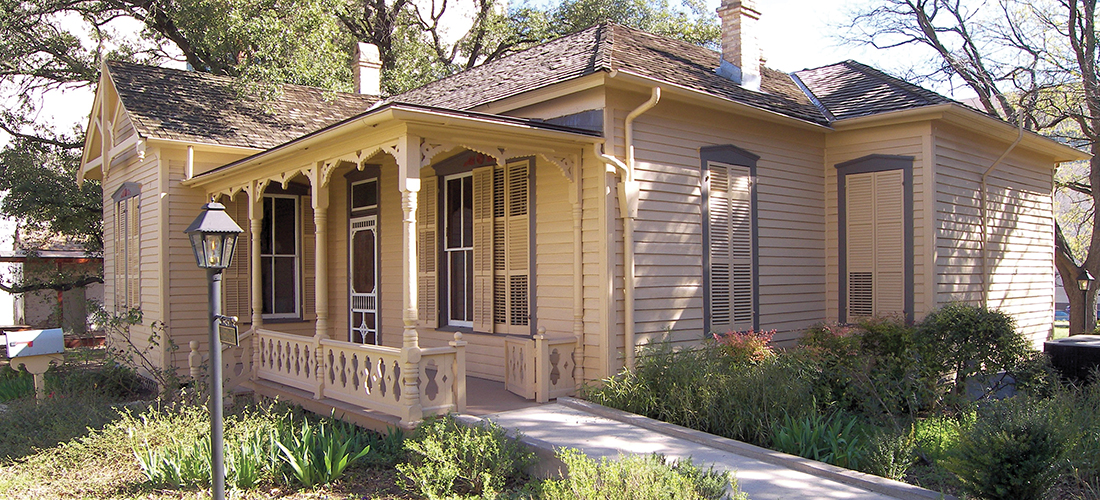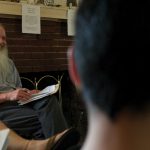
The O.H. File
William Sydney Porter’s time in Austin, Texas
By Brian Clarey
I find the William Sydney Porter House, prominently located on Fifth Street on the east side of downtown Austin, Texas, to be mildly offensive.
It’s not the home itself — five simple rooms stacked inside a creamy yellow clapboard — or its contents, which include the man’s shaving brush and mustache comb and a brown hat from his New York City years that he probably stole from a cocktail party in some uptown high-rise.
It’s just that . . . O.Henry is our guy. Sure, he spent a few years there, right before his time in the penitentiary. But he only lived in this particular house for a couple of years, certainly not long enough to justify the vulgar National Register of Historic Places plaque posted out front when compared to the crucible of his creative soul that is Greensboro.
And let’s face it, O.Henry’s time in Austin did not go well.
I understand why Porter went to Texas.
He was just a 19-year-old pharmacist selling opiated tinctures and stimulants to the denizens of Elm Street in 1882, his head filled with books and his body wracked with a deep, tubercular cough reminiscent of the one that had eventually taken his mother when he was just 3.
And anyway, Cotulla, Texas, was booming when he got there in 1882: a new rail line and depot, a new ranch, and the type of searing, Texas-style heat that soothed his lungs.
After a couple of years of that, he made it to Austin and did about what every other 22-year-old would have loved to do: He joined a band. He started a ’zine. He met a woman. And he fell in with a bad crowd.
It all began so promisingly.
Drawn in by the streetlamps and saloons of downtown Austin — at least twice as many as in his hometown in North Carolina — and flush with cattle and cotton money, he enjoyed a social life beyond anything Greensboro could offer.
He met Athol Roach, with whom he would elope in 1887, and used his ranching experience to snag a surveying route with the Texas General Land Office. He and Athol, who was also showing symptoms of tuberculosis, had a child, Margaret. And he started the Rolling Stone, a five-cent one-sheet with short stories, comedic verse and one-liners that made the rounds as far as San Antonio.
But it all started to go south when he took a job as a teller at the First National Bank of Austin and set up house with his family in these very rooms.
He told the feds that he didn’t do it, that the bank had always played it fast and loose with their accounts, that he was just a patsy. Still, he was indicted in 1896, and he took the scoundrel’s way out: He ran, first for New Orleans, and then for Honduras, leaving Margaret and Athol, whose own final bout with tuberculosis had just begun.
He wouldn’t return to Austin until his wife’s final days. She died in this very bed, now angled from the wall in a front room of the William Sidney Porter House. And O.Henry went off to jail in Ohio, which turned out to be the best thing that ever happened to his career.
He adopted his pseudonym in the Ohio Penitentiary to mask the authorship of tales scripted behind bars. Porter didn’t really become O.Henry until after he served his time, when he prolifically produced the bulk of his canon from New York City.
Both of these places have a more legitimate connection to O.Henry, I think, than Austin, which seems to have had a worse influence on his life than even a federal prison.
“His time here was pretty dubious,” says Curator Melissa Parr. “It borders on the bizarre.”
That he was not complicit in the bank fraud is taken almost as gospel here. Less defensible is his hasty exit.
“He abandoned his family,” a staffer reminds her.
“But he came back,” Parr counters.
“When she was dying!”
Here among his things, in the house where he lived, it’s not hard to humanize the man, even a hundred years after his death — easy to imagine him rinsing his face at the porcelain bowl of his wooden washstand, to picture Athol sewing the needle book displayed on the wall and presenting it to her young husband, to see the two of them side by side on the porch in these twin cane rocking chairs taking in the sights and sounds of the thoroughfare.
Parr defends O.Henry’s relative scoundrelness against the accepted behaviors of his time.
“I don’t think he’s a great guy,” she says, “but I don’t think he deserves the kind of vitriol you heap on him.”
Once upon a time Austin was home to the youthful O.Henry: a flawed, impulsive young man, prone to living large and making big mistakes. Although he’s certainly treated as a legend, someone who was larger than life, he was just another guy from the East who moved to town and everything went to hell.
In Greensboro, where O.Henry was born and raised; where he found his second wife, Sallie Coleman; where his legacy is as much a part of the city’s tapestry as the denim trade and the railroad, we hold dear to the myth that sprouted from our soil and the literary giant that he became along with the body of work that perpetuated it. OH
Brian Clarey is the publisher and executive editor of Triad City Beat.





